Notre Dame
The cathedral of Notre Dame. Point zero for all distances measured in Paris is the place where it all started for the city. It’s where the first permanent settlers built their village, and where the Romans built their camp that gradually evolved into the greatest city in Europe.
Excavations carried out at different times at the eastern part of the Ile de la Cité, where Notre Dame Cathedral stands today, proved that the cathedral was built on the site of an earlier pagan temple which was later replaced by a large Christian basilica with five naves, probably similar to the ancient basilicas of Rome or Ravenna, among others.
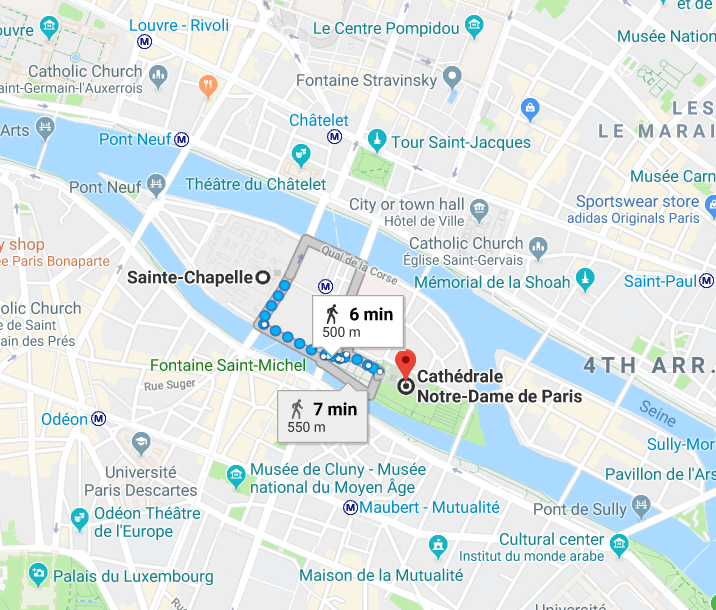
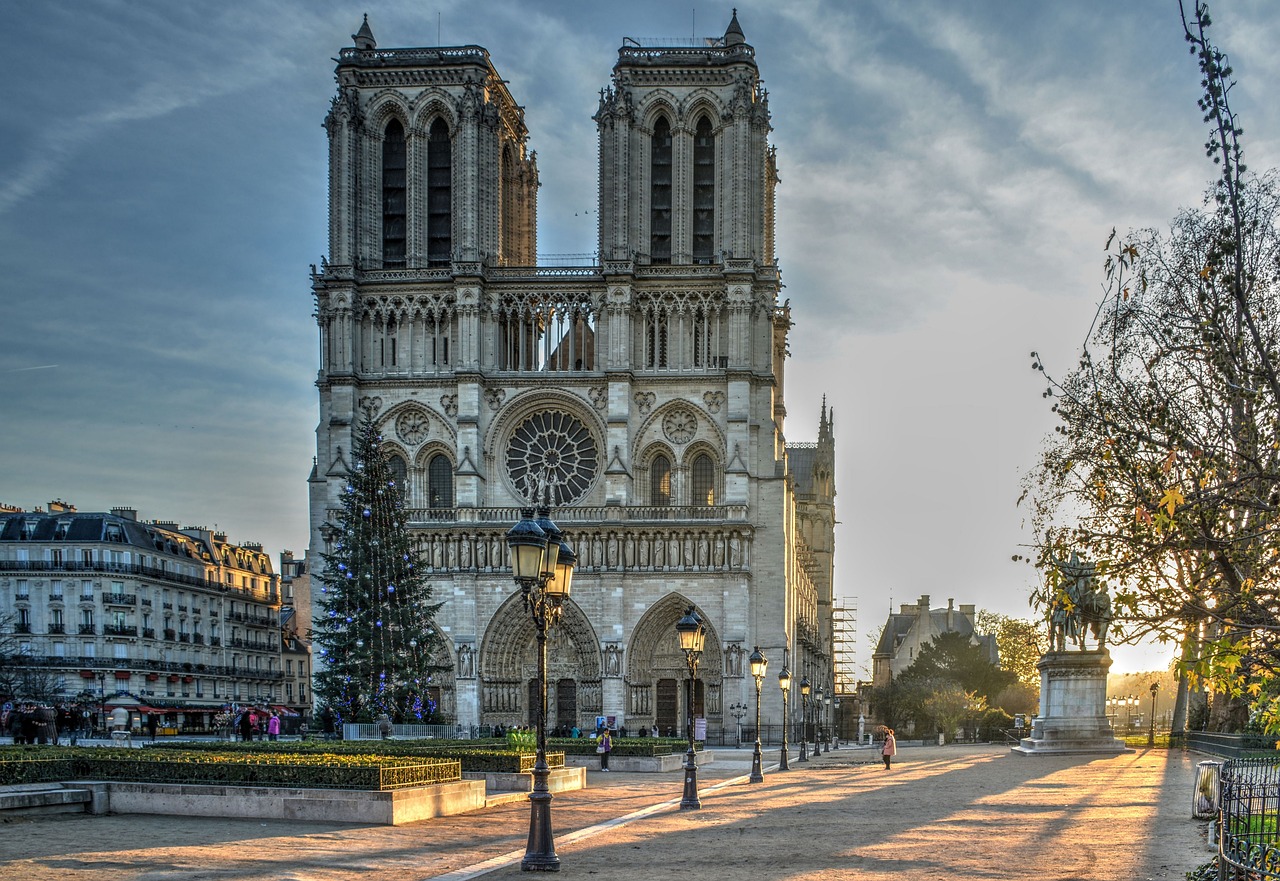
What we do not know with certainty is whether this cathedral which was dedicated to Saint Étienne, had been raised in the 4th century or if it was raised in the 7th century with materials that predated the construction of the time. One thing is certain: Saint-Etienne cathedral was very large. Its west facade, about forty meters farther west than Notre Dame’s current facade, was barely inferior in width, and as to the total length of the building, it represented a little over half the size of the current building. Inside, the naves were separated by marble columns and the walls were covered with mosaics.
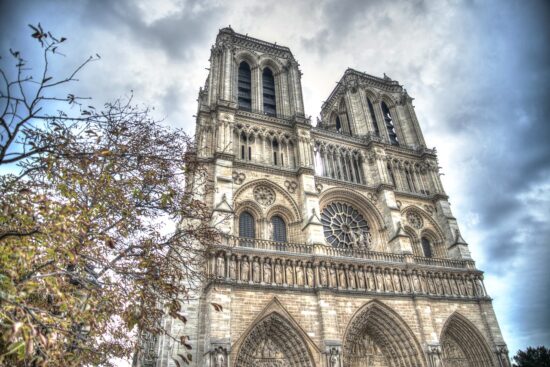
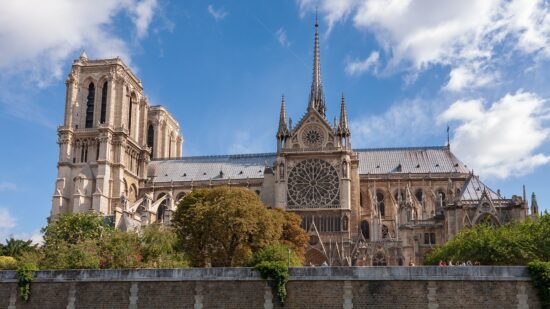
Then came Maurice de Sully, the man who would change the history of architecture forever. When Maurice de Sully became Bishop of Paris in 1160 he decided to build a new cathedral, much longer and higher than the old one. What he wanted for the new church was what he had already achieved for the Basilica of St. Denis a few years earlier as an abbot. A Basilica so grand and jaw-dropping that would make simple and illiterate people feel what they couldn’t read.
At the same time, he wanted to express the rising status of the growing city in a kingdom with ardent aspirations. He was as much a politician as he was a man of the church. What he wanted he more than accomplished. The Frankish style, later known as Gothic would offer Europe some of the most elaborate and impressive specimens of medieval architecture that continue to inspire awe in believers and non-believers alike to this day.
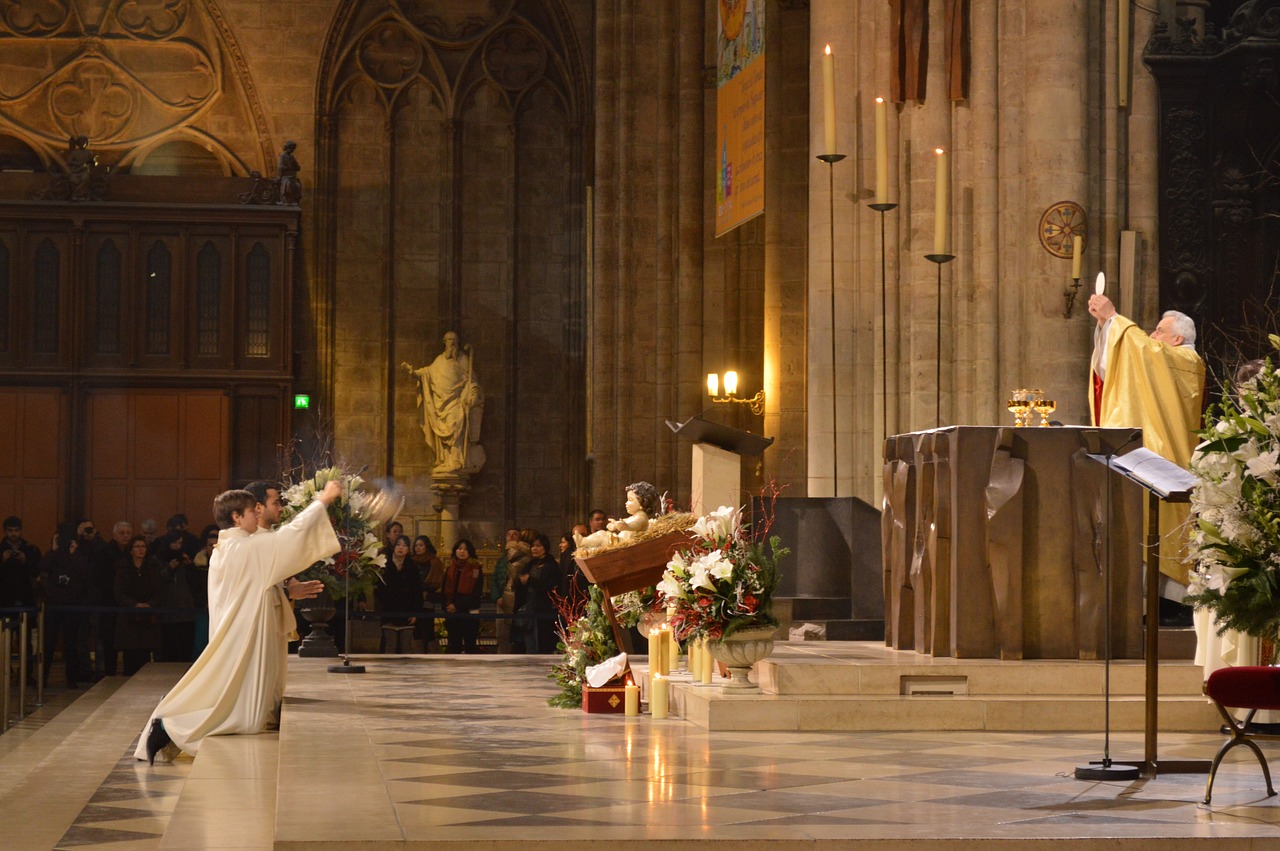

The foundation stone of the new cathedral that was dedicated to Notre Dame (Our Lady) was laid in the presence of King Louis VII, and Pope Alexander III. Most of it would be completed by the time of Sully’s death in 1196. It would take 50 years more for most of the elements we see today to be set in place.
Today a great part of Notre Dame’s unwithering worldwide fame is of course considered to be the outcome brought by the timeless appeal of the classic 1830’s novel The Hunchback of Notre-Dame by Victor Hugo, a story that still puts children to bed but the truth is that this cathedral has been witness to so much and so important historic events, that to walk through its West Door could bring a history lover to tears.
It was in this cathedral that the sparks of one of the first universities in modern history were lit, transforming Paris into a European beacon of education, it was in this cathedral that Henry VI of England was crowned King of France and where Henry of Navarre married Margaret of Valois (Queen Margot), where Napoleon was crowned Emperor by Pope Pius VII.

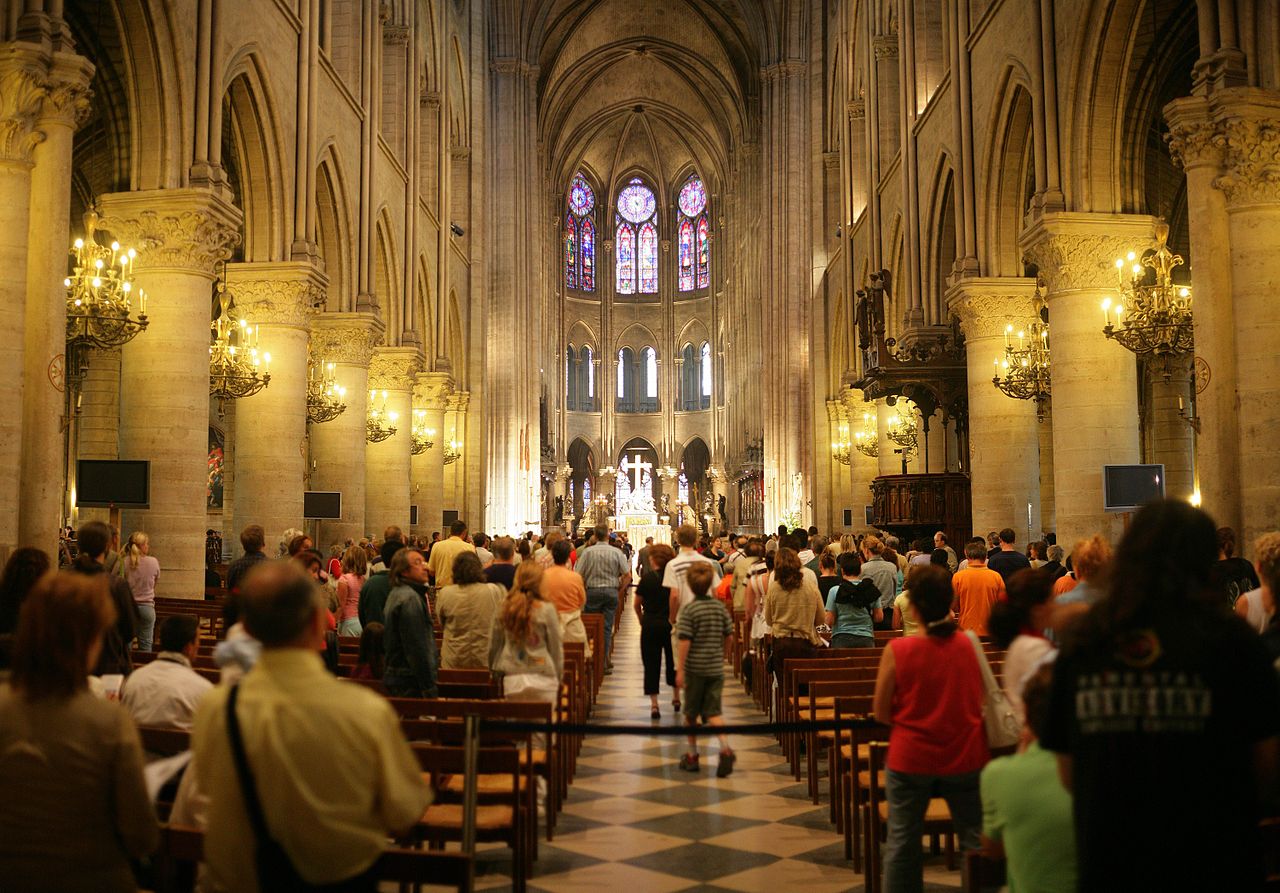
Most notable features are of course the three stunning rose windows, the treasury where a piece of the Crown of Thorns and the relics of the two patron saints of Paris, St Denis, and Saint Genevieve are kept, the archaeological crypt below ground, and of course the views from the towers. To get the famous gargoyle’s perspective of Paris you must climb up the 387 steps. The spooking gargoyles, chimeras, and eerie creatures on the towers will make you feel like you’re entering a Dan Brown novel and will surely make you wonder about their meaning. We’ll let you “Robert Langdon” this on your own to add to the mystery.

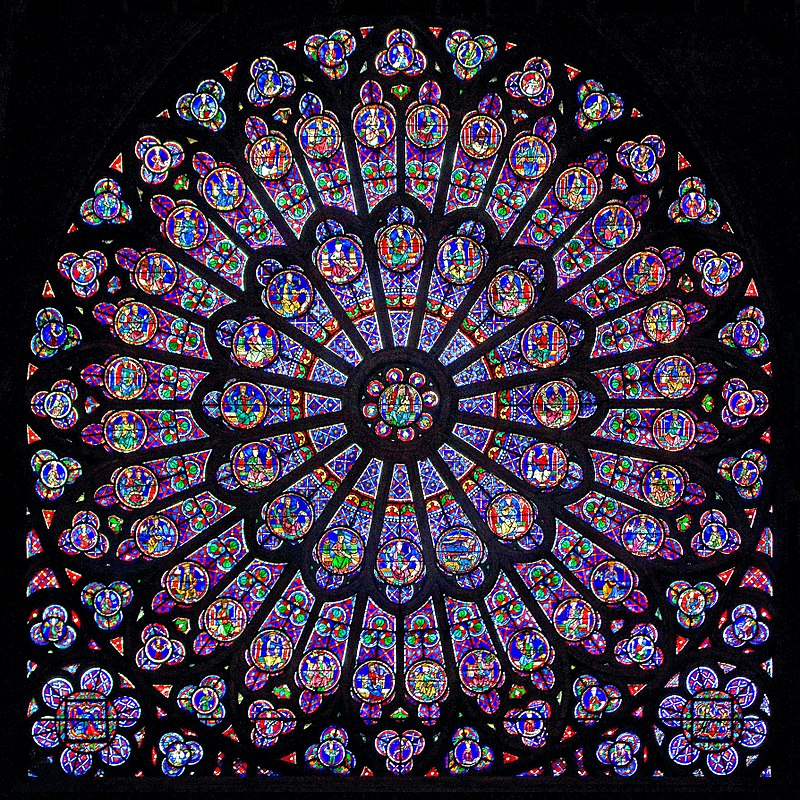
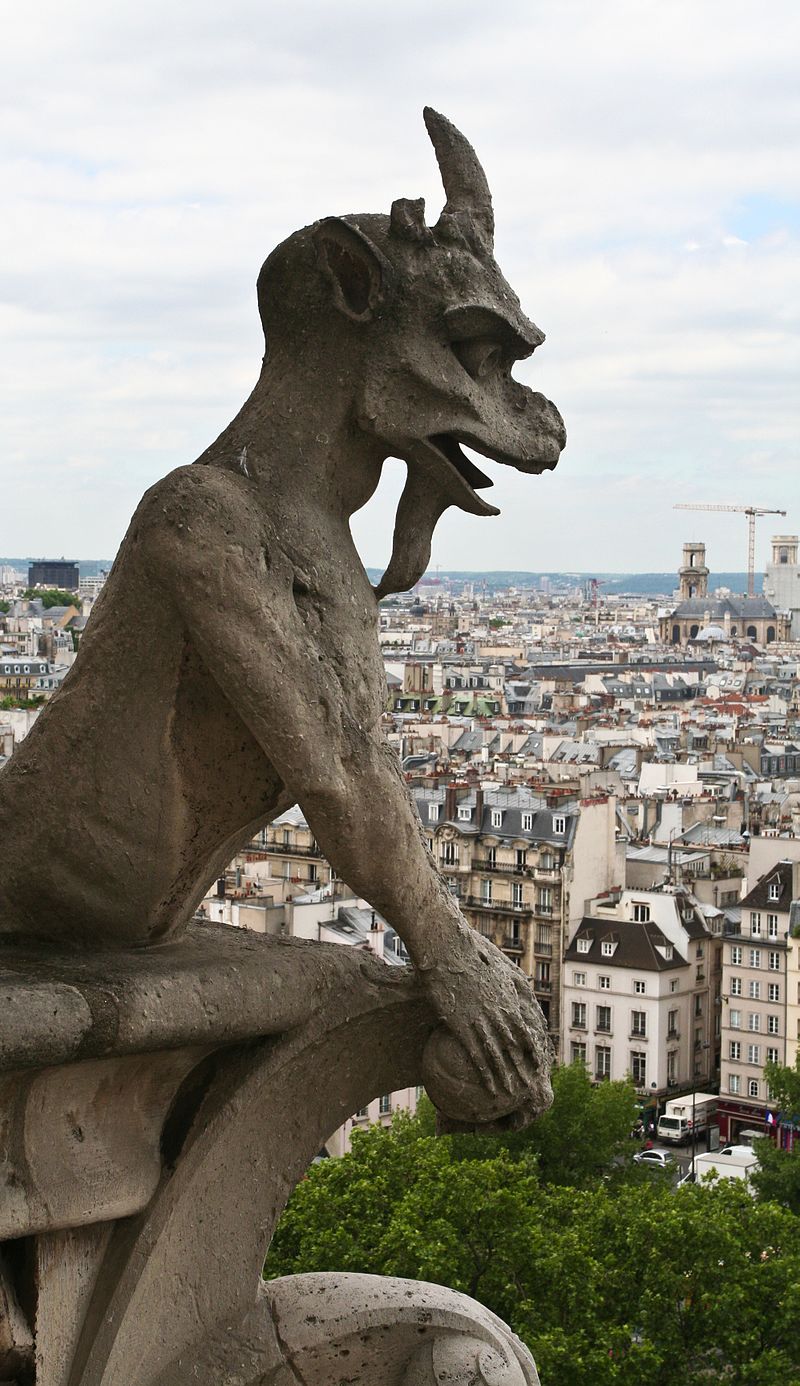
* This piece was written before the tragic events of April 15, 2019. We hope that this monumental Cathedral will be restored to its full glory, turning the sad events of that day into a new triumph of perseverance.

